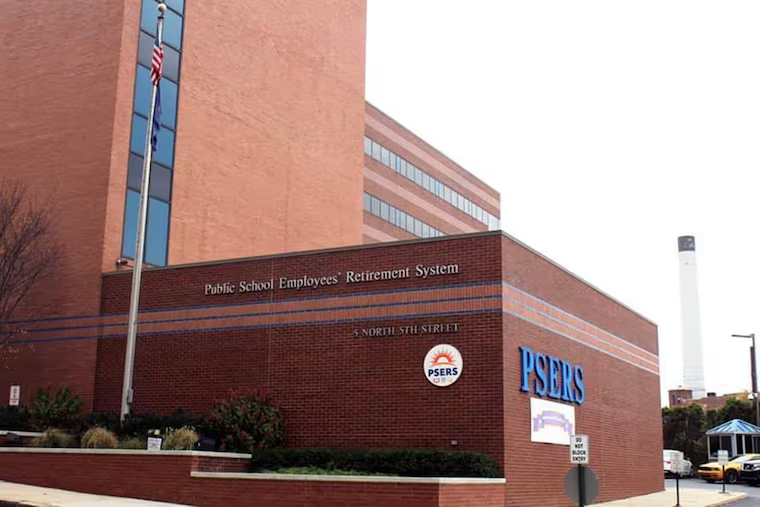PSERS doesn’t deserve the bad rap | Opinion
With a diverse and conservative investment portfolio PSERS has grown their assets from $43 billion in 2009 to more than $70 billion in 2021.

Two runners do a 1-mile time trial. Runner A records a time of 7 minutes on a flat track. Runner B does their trial on a grass hill with a 15-pound knapsack on their back and records a time of 7 minutes, 20 seconds. Who is faster?
Some may say, “It’s simple: A mile is a mile, no excuses. Runner A is the fastest.” But most others would note it’s difficult to say given that the incline and additional weight certainly slowed Runner B. In other words, when most people examine a situation like this time trial or perhaps something more esoteric, like pension fund performance, they often dig deeper to understand the circumstances behind the results.
Think of the Public School Employees’ Retirement System, also known as PSERS, as Runner B. PSERS, like Runner B, faces unique circumstances — historically low funding levels and a conservative lower-risk portfolio — that must be considered when evaluating its performance.
» READ MORE: Why PSERS investment strategy has failed to pay off for Pa. taxpayers and school employees
PSERS, which manages a $70 billion investment fund that provides retirement security for more than 500,000 active and retired educators in Pennsylvania, has found itself in the spotlight lately for underperforming its targets. Yet on Aug. 4, PSERS announced one of its biggest investment returns in the last 50 years, a whopping 25% return that generated $12 billion. It is the highest in the last 26 years.
This is good news, and it speaks well of the overall investment strategy that PSERS is using. That said, pension funds are long-term investment institutions; no single year, good or bad, should ever be a measure of performance. And even long-term measures of performance require context and history.
Let’s step back in time to 2007, the year before the market crash. The stock market was roaring and like most public pension funds, PSERS was heavily invested in public equities, ironically a strategy some commentators are advocating now. When the market crashed, PSERS lost $25 billion over the next two years.
Most funds took a major hit during this time, but PSERS’ circumstances were different from many funds. First, for four years prior to the crash (and for a decade after), the legislature was underfunding PSERS, putting less money into the fund than their actuaries recommended. Second and related to the underfunding, PSERS was paying out more in benefit payments than it was bringing in something called negative cash flow. PSERS’ negative cash flow was twice as bad, on average, as other funds. The upshot: PSERS had to maintain more liquidity and invest more conservatively, sacrificing returns but taking on less risk to stay afloat. Another market crash might sink the fund, put retirement benefits at risk, and drive up the employer contribution rate.
With a diverse and conservative investment portfolio PSERS has grown their assets from $43 billion in 2009 to more than $70 billion in 2021, significantly improved their cash flow position, increased their funded ratio, and for more than 10 years, PSERS is in the top 5% of pension funds based on risk adjusted returns. And credit the legislature for making PSERS funding a priority, funding 100% of the required contributions for six straight years.
» READ MORE: Amid the pension’s crisis, it’s time for change at PSERS | Editorial
Some commentators have criticized PSERS’ investments in real estate and private equity. Yet private equity and real estate, two investment classes common for large pension funds, have been stars for PSERS, which explains them as part of a diverse portfolio: “Diversification is a very humble approach to investing. If an investor knew with certainty which asset would perform best the next month, quarter, or year, the investor would simply invest in that one asset class. However, without such perfect hindsight, the downside risk of such a strategy could be devastating.”
So how has PSERS performed over time? In some multiyear comparisons, PSERS is above the median public defined benefit plan by a small amount. In others, it’s below by a small amount. Despite its intentionally conservative portfolio, PSERS’ performance is mid-pack. Those with “perfect hindsight” may think all PSERS funds should be narrowly invested in stocks and bonds, but to do so would not be prudent.
But what about the fact that PSERS missed its performance target by 0.02% last year, which triggered increased contributions for some PSERS members? The real story is that private equity and real estate, unlike the other PSERS investments (e.g., public stocks and bonds), closed their 2020 books at the end of March during the depths of the pandemic market. This is bad timing, not bad investment strategy. And that’s why performance slipped slightly below the target.
One can write countless stories about individual PSERS investments in a sea of literally thousands of investments. But in the final analysis, considering all the critical issues involved in protecting retiree benefits and gradually improving fund performance, PSERS has run a very solid race.
Hank Kim is executive director and counsel of the National Conference on Public Employee Retirement Systems, Washington, D.C. NCPERS is the largest trade association for public sector pension funds, representing PSERS and more than 500 funds throughout the U.S. and Canada with more than $4 trillion of combined assets.